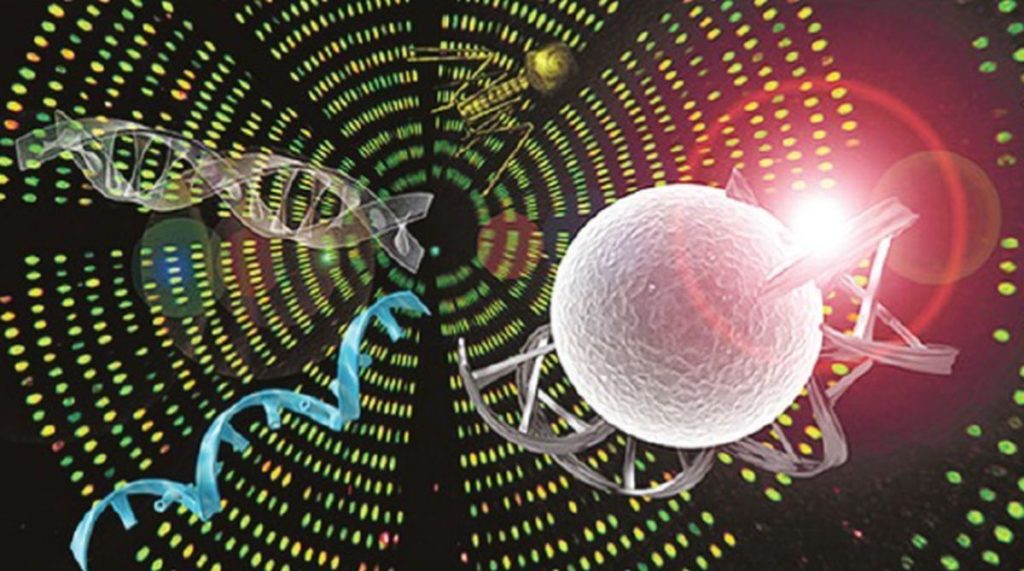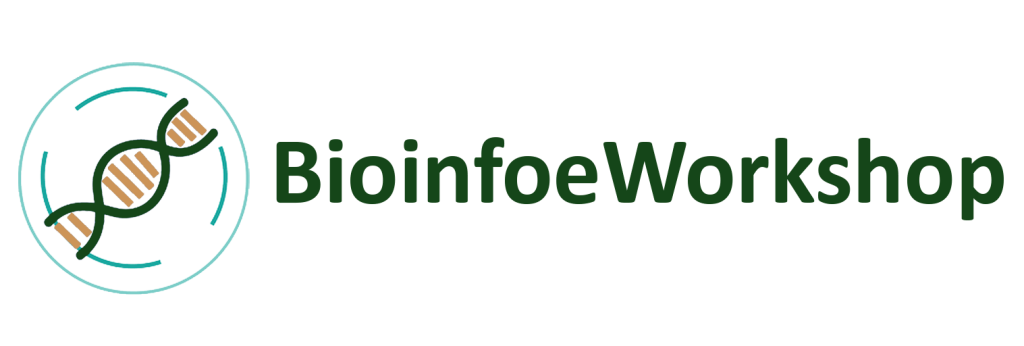BIOINFORMATICS
INTRODUCTION:
Bioinformatics is a field of science that combines biology, computer science, mathematics, and statistics to analyze and process large amounts of biological data. It is used to study genes, proteins, and other molecules involved in the functioning of living organisms.
Bioinformatics involves the use of computers and software to analyze, manipulate, and interpret biological data. Bioinformatics can be used to study a wide range of topics, such as gene expression, protein structure and function, and the evolution of organisms. Bioinformatics can help scientists better understand genetic diseases, develop new drugs and therapies, and improve health care.
Bioinformatics often involves the use of databases to store and organize biological information. This information can include gene sequences, protein sequences, protein structures, and other types of data. Tools are then used to analyze the data and extract meaningful information. For example, bioinformatics can be used to identify genes associated with a particular disease, or to analyze the structure of a protein to determine its function.
Bioinformatics also involves the use of computer algorithms to analyze and interpret biological data. These algorithms can be used to predict the structure and function of proteins, identify candidate genes related to a particular disease, and design new drugs. Bioinformatics is an important field of science, and it is becoming increasingly important as the amount of biological data continues to grow.
Bioinformatics is playing an important role in the development of personalized medicine, and it is also being used to develop new treatments for diseases such as cancer and Alzheimer’s. Bioinformatics is an interdisciplinary field, and it is essential for the advancement of modern biology.

Usage of Bioinformatics:
Bioinformatics is the application of computer technology to the management and analysis of biological data. It is used in many areas of biology, including genomics, proteomics, drug design, and evolutionary biology. Bioinformatics combines the fields of computer science, biology, chemistry, and mathematics to develop new algorithms, software, and databases for the analysis of biological data.
Bioinformatics is used in a wide range of applications. It can be used to analyze large amounts of data from DNA sequencing projects, such as those conducted by the Human Genome Project. It can also be used to study the structure and function of proteins, identify potential drug targets, and develop drugs to treat diseases. In addition, bioinformatics is used to understand the evolutionary relationships among species, and to analyze population genetics data.
Bioinformatics is also used in the development of new methods for analyzing biological data. These methods include tools for gene expression analysis, protein structure prediction, and molecular phylogenetics. Bioinformatics tools are also used in the development of new software and databases for the analysis and storage of biological data.
Importance:
Bioinformatics is important because it can provide insights into biological processes, relationships and structures. It can also be used to identify new drugs and treatments, and to develop diagnostic tests. Additionally, it can be used to develop new drugs, vaccines and treatments for diseases.
Bioinformatics is also important for understanding the genetic and molecular basis of diseases and for predicting disease progression. By analyzing large datasets, bioinformatics can help identify genes associated with diseases and can be used to predict how diseases may progress. This can be used to develop new treatments or to identify potential drug targets.
Bioinformatics is also used to study the interaction between genes, proteins, and other molecules. This can help us understand how they affect one another and how they interact in the body. It can also help us understand how diseases develop and spread.
Finally, bioinformatics is important for developing new technologies that can be used to monitor and analyze biological data. For example, bioinformatics can be used to develop new diagnostic tests, to monitor disease progression, and to track genetic mutations. It can also be used to develop new technologies for gene editing and genetic engineering.
Modules of Bioinformatics:
Bioinformatics is an interdisciplinary field that combines biology, computer science, mathematics and engineering to analyze and interpret biological data. It is used in a variety of fields such as drug discovery, genetic engineering, and medical diagnostics. The components of bioinformatics include the following:
- Data Acquisition: This is the process of collecting data from various sources such as databases, journals, and other scientific literature. Data acquisition involves the use of techniques such as data mining, web scraping, and data warehousing.
- Data Analysis: This is the process of analyzing and interpreting the collected data. It involves the use of techniques such as statistical analysis, machine learning, and natural language processing.
- Data Visualization: This is the process of making the data easier to interpret by creating graphical representations of the data. It involves the use of techniques such as network visualization, heatmaps, and 3D models.
- Database Management: This is the process of managing the data in a database. It involves the use of techniques such as database design, data modeling, and data integration.
- Algorithms: This is the process of developing algorithms to solve complex biological problems. It involves the use of techniques such as genetic algorithms, neural networks, and machine learning.
- Software Development: This is the process of creating software applications to facilitate the analysis and interpretation of data. It involves the use of techniques such as software engineering, user interface design, and database development.
- Bioinformatics Infrastructure: This is the process of building an infrastructure to support the development and use of bioinformatics tools and technologies. It involves the use of techniques such as cloud computing, distributed computing, and grid computing.
.
Types of Bioinformatics:
There are four main types of bioinformatics: structural bioinformatics, functional bioinformatics, evolutionary bioinformatics, and clinical bioinformatics.
Structural bioinformatics is the study of the three-dimensional structure of proteins and nucleic acids. It involves the use of computer programs and databases to analyze the structure of genes, proteins, and other biological molecules. Structural bioinformatics is used to identify proteins and nucleic acids and to understand their function, structure, and interactions.
Functional bioinformatics is the study of the function of genes and proteins in the cell. It involves the use of computer programs and databases to analyze the function of genes and proteins and to understand their role in complex biological processes.
Evolutionary bioinformatics is the study of evolutionary processes and the history of life on Earth. It involves the use of computer programs and databases to analyze the evolution of genes, proteins, and other biological molecules and to understand the history of life on Earth.
Clinical bioinformatics is the study of the application of bioinformatics in clinical settings. It involves the use of computer programs and databases to analyze patient data and to make decisions about diagnosis, treatment, and prevention of diseases.
Bioinformatics is an important and rapidly growing field, and it has the potential to revolutionize the way we study biology and medicine. It is used in a variety of fields, from drug design to population genetics. It can help us understand the causes of diseases and develop treatments. Bioinformatics has the potential to change the way we understand biology, and it is an important tool for biomedical researchers.
An Exemplar of Bioinformatics:
One of the most commonly used examples of bioinformatics is gene sequencing. This involves the process of reading a gene’s sequence of nucleotides, or base pairs, and translating it into a meaningful and interpretable form. This can then be used to better understand how a particular gene functions and how it may be related to other genes. Another example is proteomics, which is the study of proteins, their structure and function, and how they interact with other molecules.
This field is used to identify proteins and understand how they interact with other molecules, such as drugs and toxins. In addition to gene sequencing and proteomics, bioinformatics techniques are also used to analyze large datasets such as genomes and gene expression data.
For example, these techniques can be used to study the genetic basis of diseases, analyze genetic variations, and identify potential drug targets. Furthermore, bioinformatics is used to design algorithms and tools for analyzing and interpreting biological data. These tools are used in a variety of fields, including medicine, agriculture, and biotechnology.
Epilogue:
Bioinformatics has come a long way in the past two decades, from its humble beginnings in the early 1990s as a small field of research to its current status as an essential tool for modern biological research. Bioinformatics has enabled researchers to rapidly analyze large datasets, uncover new insights from existing data, and develop predictive models for disease diagnosis and treatment. It has also enabled the development of sophisticated algorithms for sequence alignment, protein structure prediction, and gene expression analysis.
In conclusion, bioinformatics has become an important part of life sciences research, and its use will only continue to grow in the future. Its ability to quickly analyze and interpret large datasets has allowed researchers to make significant progress in areas such as drug discovery, gene therapy, and personalized medicine. The development of new algorithms and software tools has enabled researchers to take full advantage of the data available to them and to make new discoveries that would otherwise be impossible. Bioinformatics is a powerful tool that has revolutionized the way biologists work and will continue to do so in the future.
